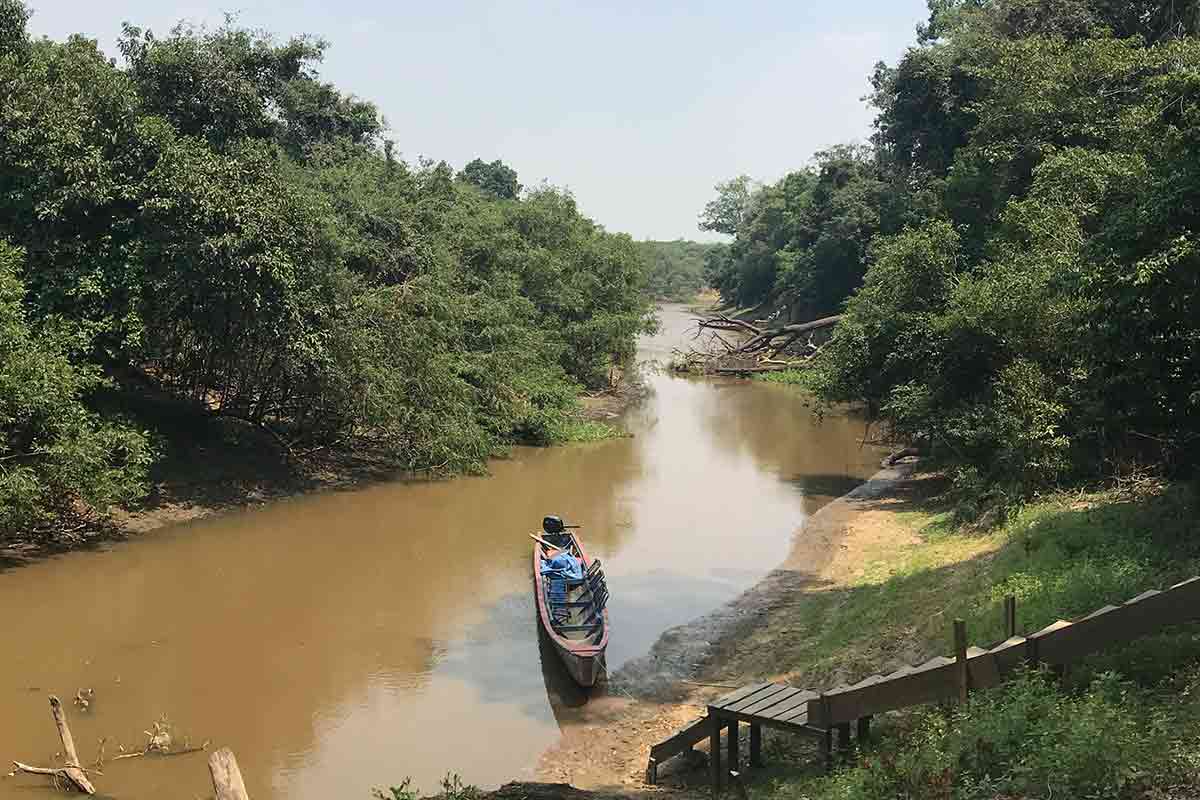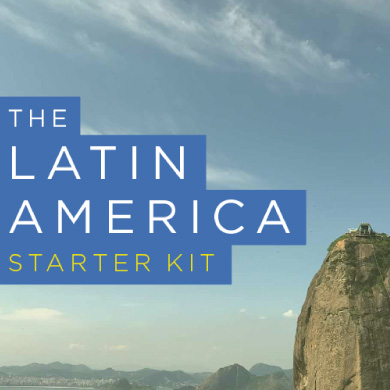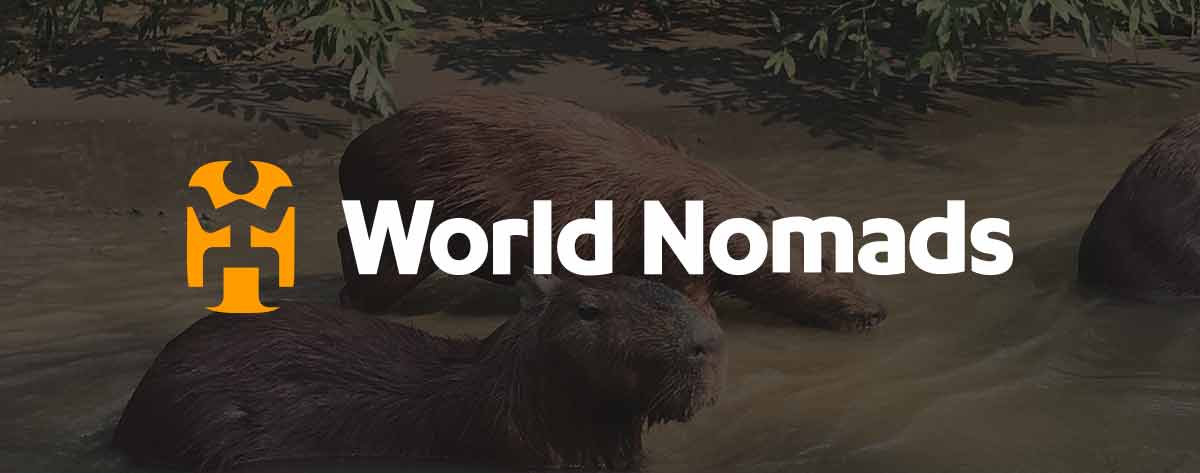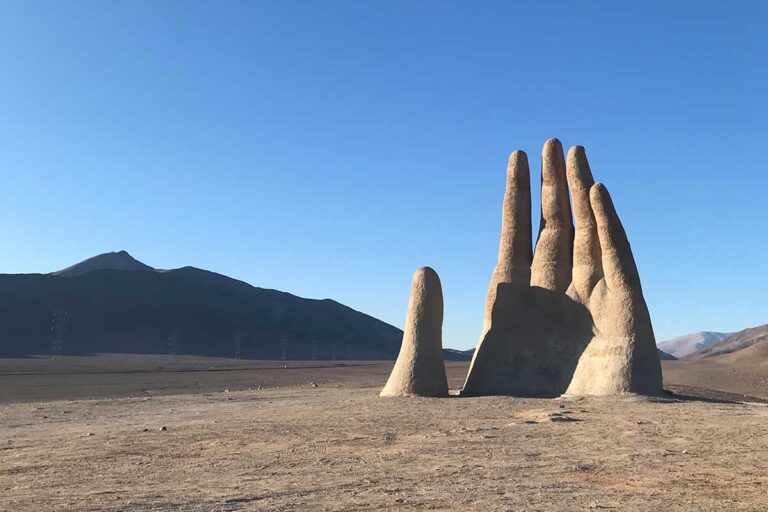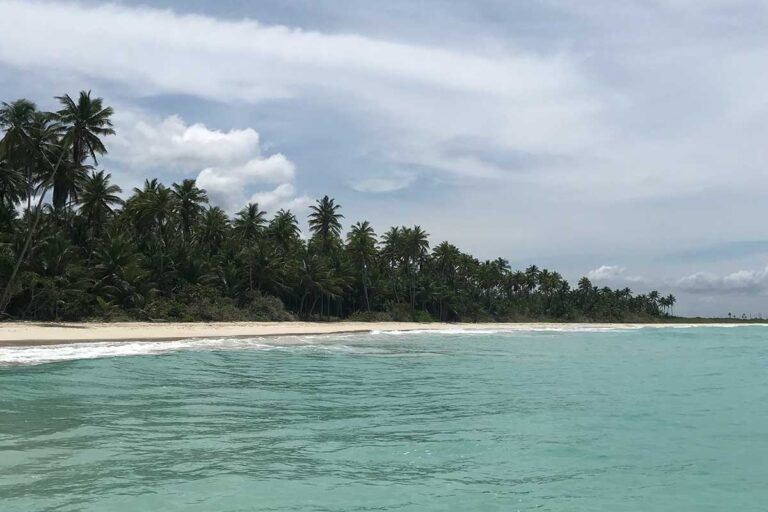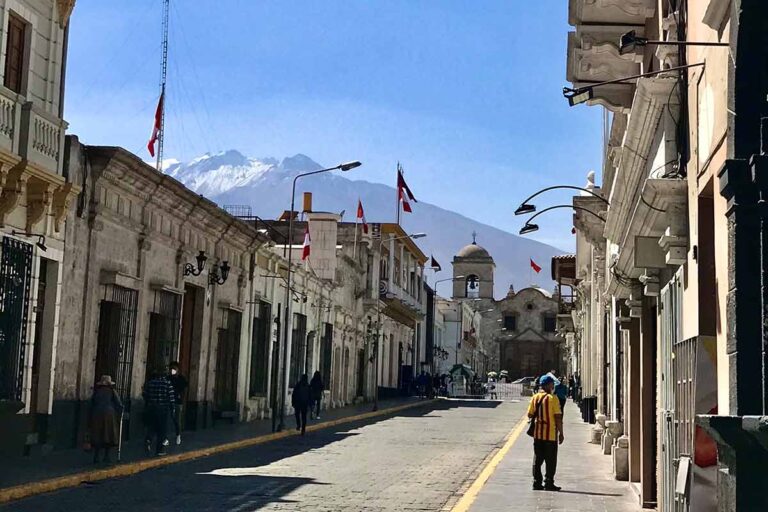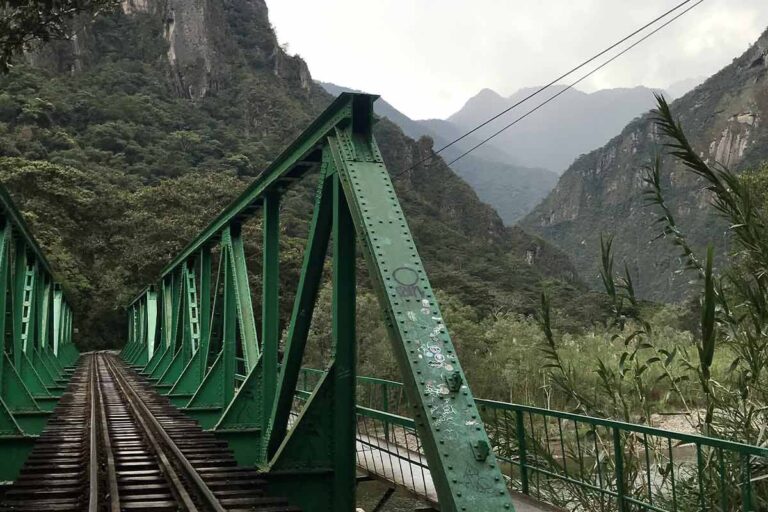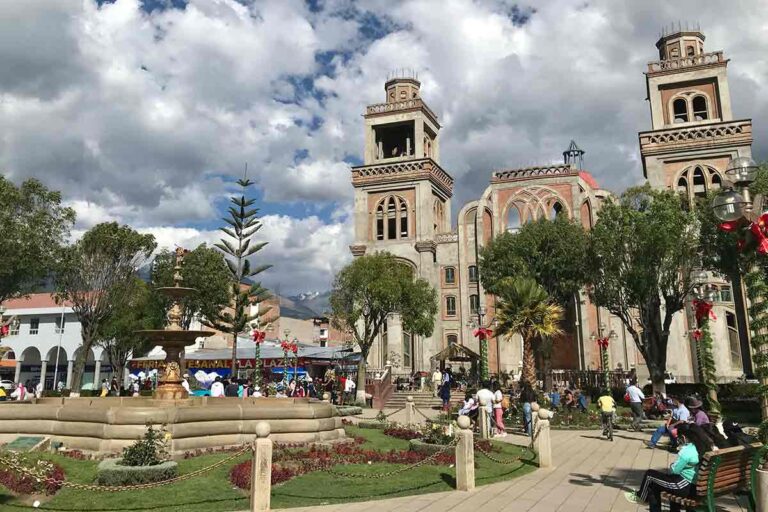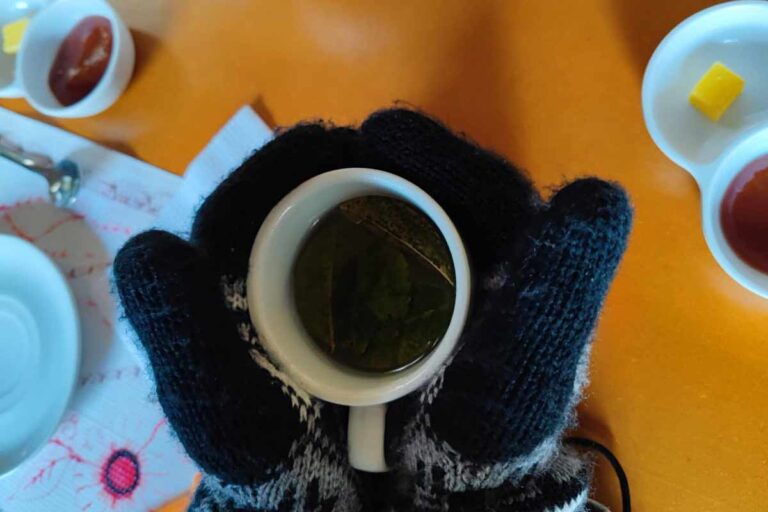Visiting the Bolivian Amazon Jungle
South America is home to the largest rainforest on the planet – The Amazon Jungle – which is full of amazing wildlife, scenic landscapes and unique experiences.
On my travels around the continent I’ve been able to visit this huge swatch of rainforest in various countries, including Peru, Brazil and Venezuela. However, most recently I visited the Amazon Rainforest during a couple of months spent throughout Bolivia.
Visiting the Bolivian Amazon Jungle
In this guide I’ll share my experience of what it was like visiting the Amazon Jungle in Bolivia, where I traveled to various regions including the Madidi National Park.
I’ll give my honest opinion on what it’s like compared with other South American countries, the animals I saw as well as the very best tours you can join here.
Why Visit the Amazon Jungle in Bolivia?
First and foremost, the Amazon Jungle in Bolivia was one of the more novel experiences I had when visiting the jungle anywhere here in South America.
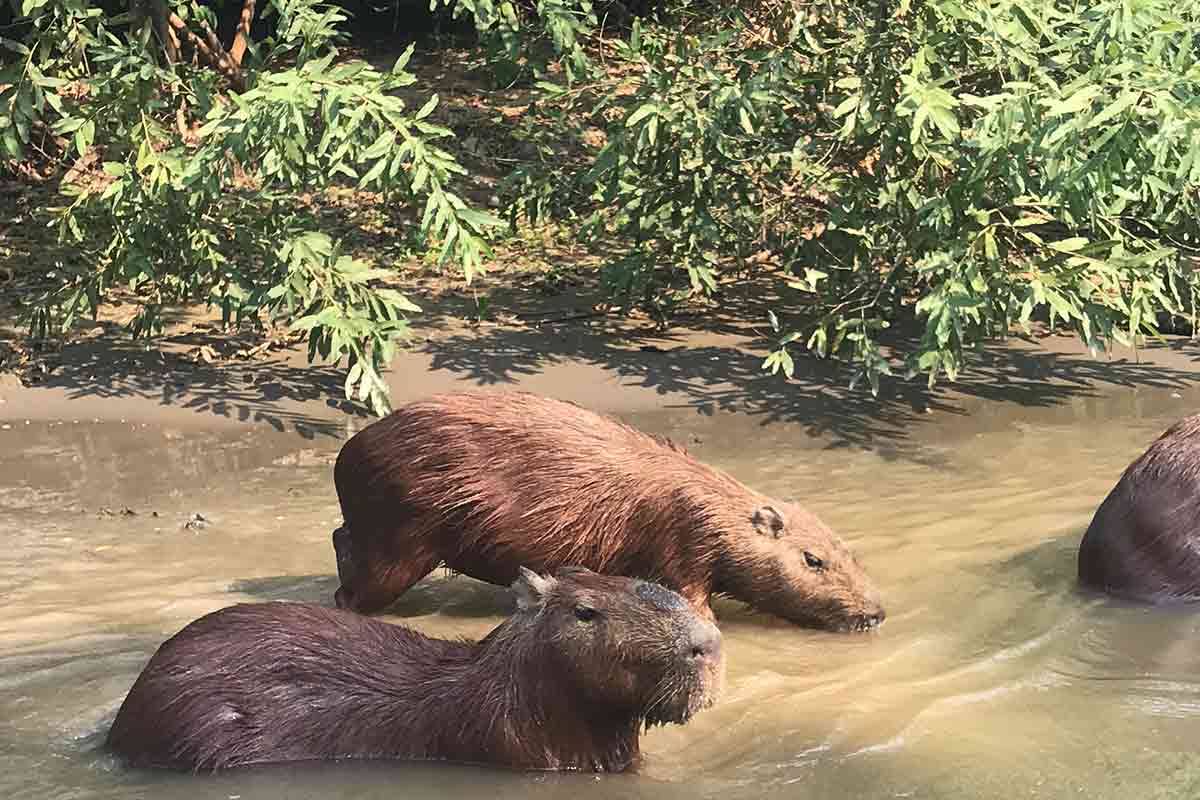
Of course this can vary depending on where you visit, however generally other jungle destinations like Iquitos (Peru) or Manaus (Brazil) are going to feel over-touristy, and also much harder to relax within the cities. Even on the rainforest tours you’ll bump into dozens of other tourist groups and boats along the way, which takes away some of the magic.
In Bolivia it can vary, and when I visited I based myself in the jungle town of Rurrenabaque. This gateway town is quite touristy, however still small and underdeveloped which made it feel nicer.
The Pampas Region was also touristy, however the trip to the Madidi National Park was desolate (both of which are easy to reach from Rurrenabaque). You could walk for hours without seeing another human here, which makes it perfect for spotting rarer animals. You’ll also get to make your own chocolate, learn survival skills, take ayahuasca among other unique activities that you can choose to do here.
Speaking of wildlife, the Madidi National Park is actually one of the most biodiverse regions on Earth! So far they’ve recorded a total of 8500+ species here, however there’s probably a tonne more given how remote and dense this area of the rainforest can get.
In the Pampas you’ll most likely see Capybara, Caiman, Monkeys and Pink Dolphins. Jaguars have been recorded in the area, and whilst I didn’t personally see one, a friend did visit and caught a glimpse of a Jaguar walking along the sandbanks. In the deeper rainforest anything goes, so you’ll probably see more wildlife like Tarantulas, Snakes and Tapir. Again rarer mammals can be spotted too, such as Jaguars, Ocelots and Wild Pigs.
Lastly, the cheaper cost of heading here will make it a really attractive option for most travelers. Tours in places like Manaus can get expensive real quick – however in Rurrenabaque you can find some amazing deals. I paid about 1500 BOB (roughly $200) for a 3 Day Tour, which included all meals, private accommodation, all transport, hikes, wildlife spotting and more.
Overall it’s much more authentic than the Amazon in Peru and Brazil, and for me was similar to the Amazon Jungle trip I did in Venezuela.
How to get to the Bolivian Amazon
The Bolivian Amazon can be visited in numerous areas throughout Bolivia. My experience (and therefore this guide) will focus on Rurrenabaque, however you can also visit from towns like Trinidad, Riberalta and even Santa Cruz de la Sierra further south in Bolivia.
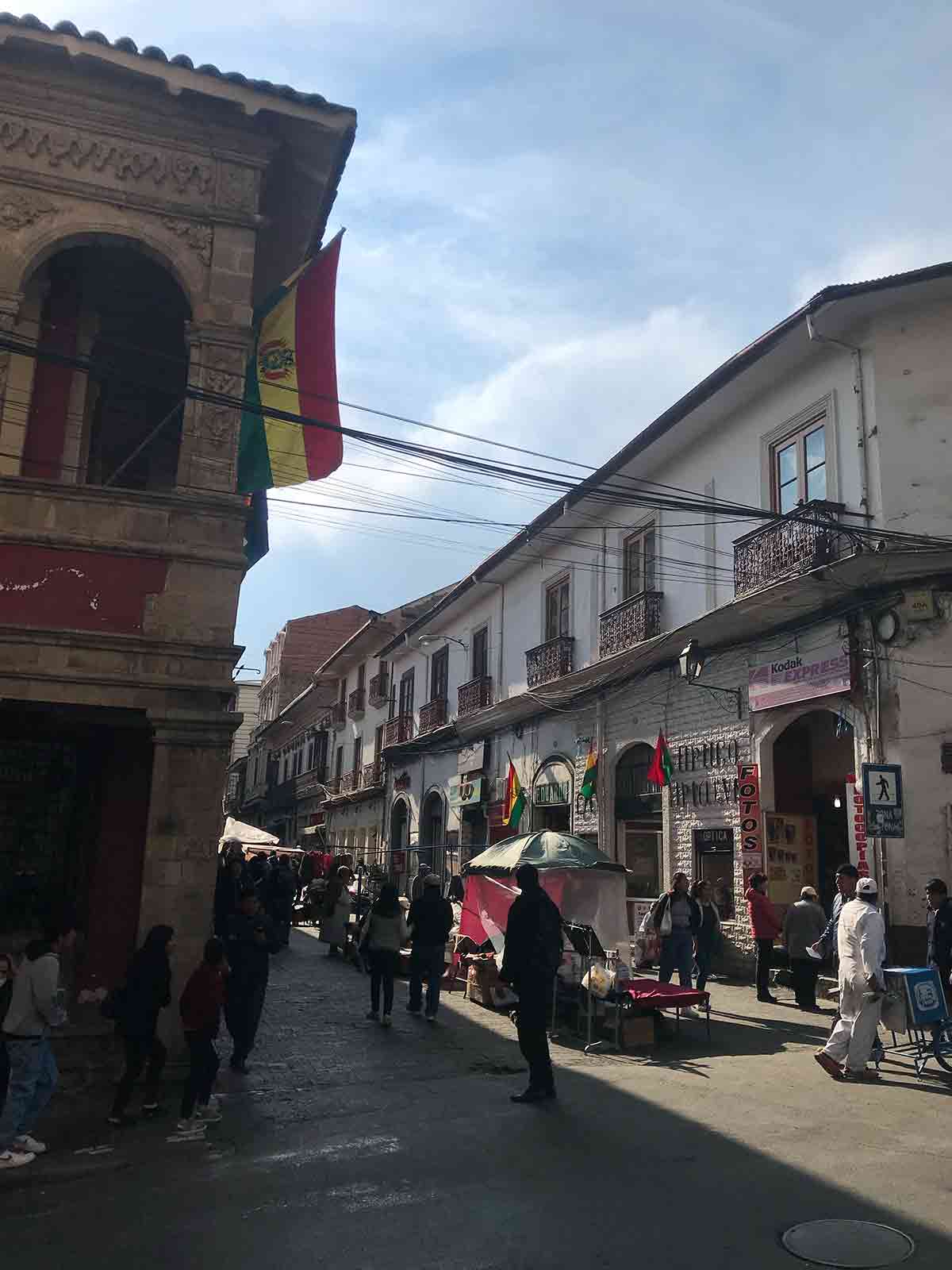
To get to Rurrenabaque you’ll first need to head to La Paz. Once in the capital, you’ll then have two main options – the bus or flight.
The bus remains the cheapest option, costing around $10 for the 13 hour journey. Most buses depart around 2-5pm, and I personally used Flota Yungueña for the trip which I recommend. They are located near the Villa Fátima Bus Station.
Not only will you arrive in the early morning (where you can then transfer directly to a jungle tour if you wish), you will also see some incredible mountain scenery as you pass along the notorious Death Road. Don’t worry though – the drivers are pros here so you’ll be in safe hands along the whole route.
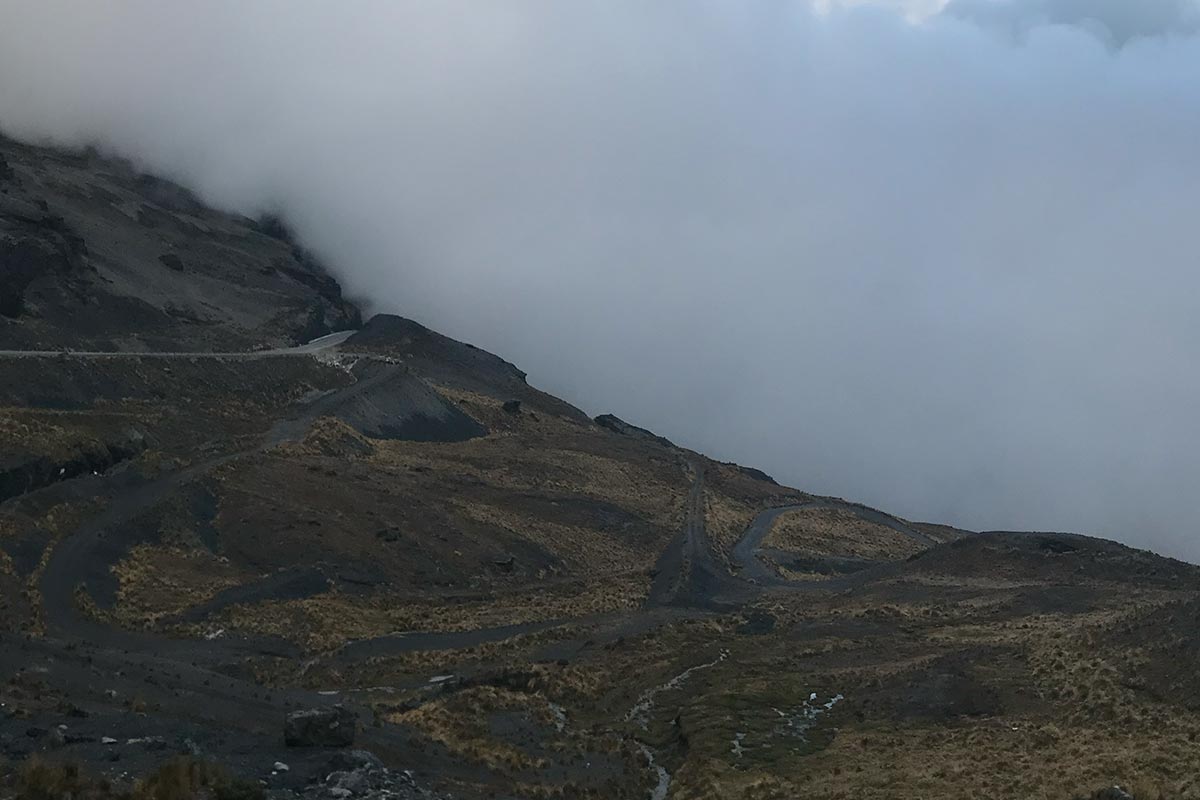
Those who prefer to travel in comfort and style can also fly from La Paz to Rurrenabaque. A one-way flight begins around $120 (without baggage included), and will take just 40 minutes to arrive compared with the 13 hour bus.
Flying is definitely better for those on a stricter time-schedule, however remember that the bus will always arrive before any jungle tours start anyhow (even with delays – given the usual arrival time is 5:00am and most tours don’t leave until 10:00am).
Once in Rurrenabaque, you can easily visit parts around the city independently by walking around. However booking a tour is a must when wanting to head deeper into the Amazon Jungle.
Where to Stay in the Bolivian Jungle
Rurrenabaque has been on the map for a quite some time now, which is all thanks to the survival story of a lost traveler. This was then made into a film “The Jungle” which starred Daniel Radcliffe (it’s a true story so I recommend watching it for extra travel inspiration).
As a result, it means we can find quite a range of accommodation options here in the town. You’ll still want to keep your expectations low though, given this is a remote area of Bolivia.
Those on a shoestring backpacking budget will want to stay at El Curichal Hostel. Here you’ll have a choice of either dorm beds or private rooms, along with an on-site swimming pool and breakfast included in the room rate.
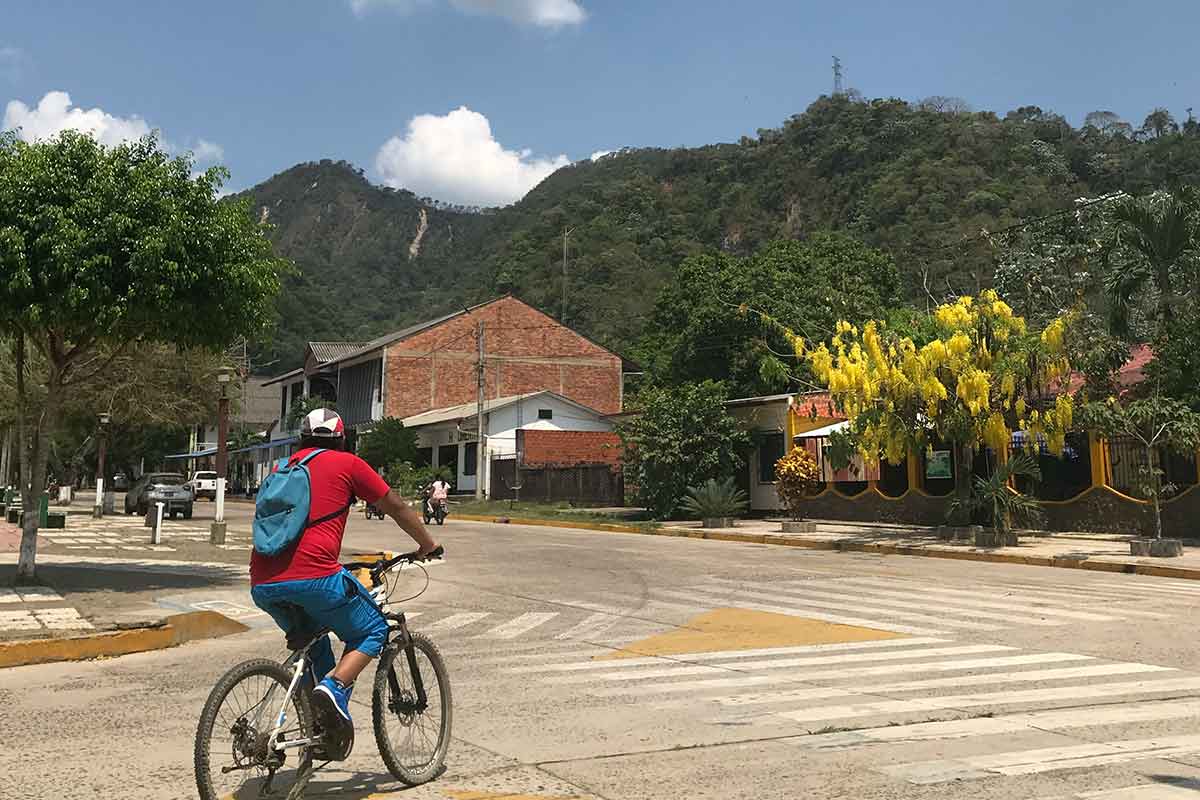
If you’re after a bit of extra luxury, then you’ll want to stay at Pampa & Selva. Located right next to the Beni River, it’s the perfect place to see the sunrise where you’ll have your own balcony and hammock. As well as staying in a comfortable private room, you’ll also be close to many restaurants and amenities.
When booking to stay a night within the Madidi National Park (usually included with a jungle tour), it’s important to keep your expectations low. Personally I thought the place we stayed at was beautiful with unforgettable views and nice meals on-site. However there were of course lots of insects, and also no hot water for showers.
Got travel insurance for Bolivia?
My Experience in the Bolivian Amazon Jungle
Now let’s get into what happened during my time here in the Bolivian Jungle.
Here I’ll cover all, including the best and worst bits of my experience. It’s also important to note that just because I did or didn’t see certain wildlife, won’t guarantee the same for you (it’s a remote wild region after all with its own rules).
Always make sure to set realistic expectations before heading here or anywhere else in Latin America. This will make it far more enjoyable for you at the end of the day!
Back in Bolivia Again (Round 2)
During my first trip to Bolivia, I actually managed to see the entire country without visiting the Amazon Jungle. It wasn’t really in my plans, however after I heard a friend saw a Jaguar on a tour, I knew I had to come back (it’s a big Bucket List Item for me).
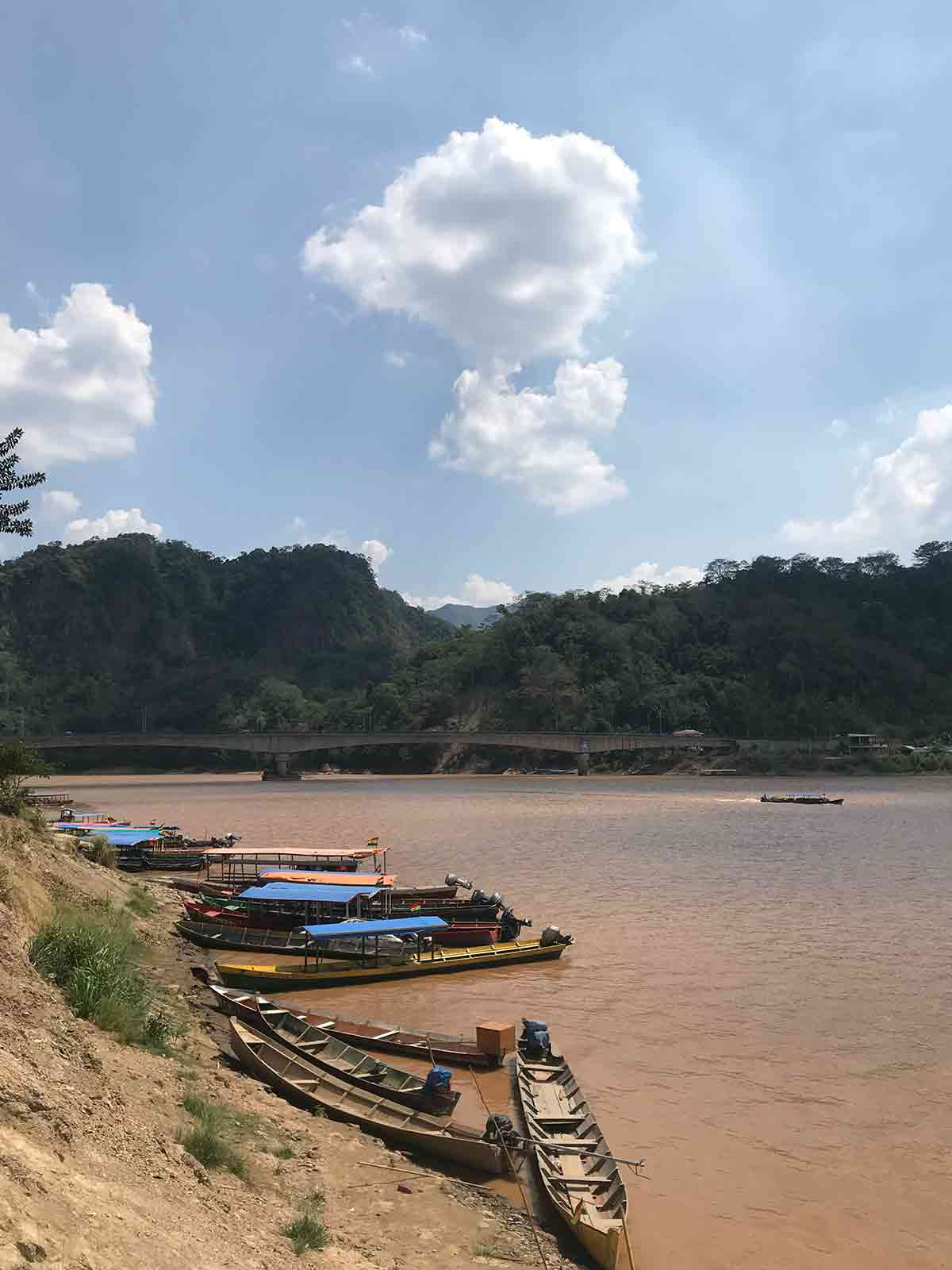
Fast-forward a year or so and I was back in Bolivia, this time staying a month in La Paz. The flights were quite expensive, so we decided to take the bus from Villa Fátima (you can find the location here – which was otherwise quite confusing to find alone). The bus took around 13 hours and departed in the afternoon, meaning we had some unforgettable views of El Yungas Road (also known as Death Road – the deadliest road on the planet).
Rurrenabaque had a much warmer climate, and although it’s touristy it felt way more authentic compared with say Iquitos or Manaus. Instead of booking a tour online, we walked in from agency to agency and got a custom trip sorted with JaguarTours (who I highly recommend – overall a solid experience and they work with really knowledgeable guides). This included a night within the Madidi National Park, getting involved with cultural practices like making our own chocolate as well as 2 days in the Pampas.
We stayed at Hotel Tacuaral for a few nights before and after our tour, which was basic but what was needed.
Heading Deep into the Madidi National Park
On the first day we set off early on a motorized canoe into the deeper rainforest. Within just a few minutes we felt far from civilization, which was the whole point of this experience. Our guide then took us on walks through the jungle, spotting rare plants as well as animals like colorful Frogs, Tarantulas and even a cave full of Bats.
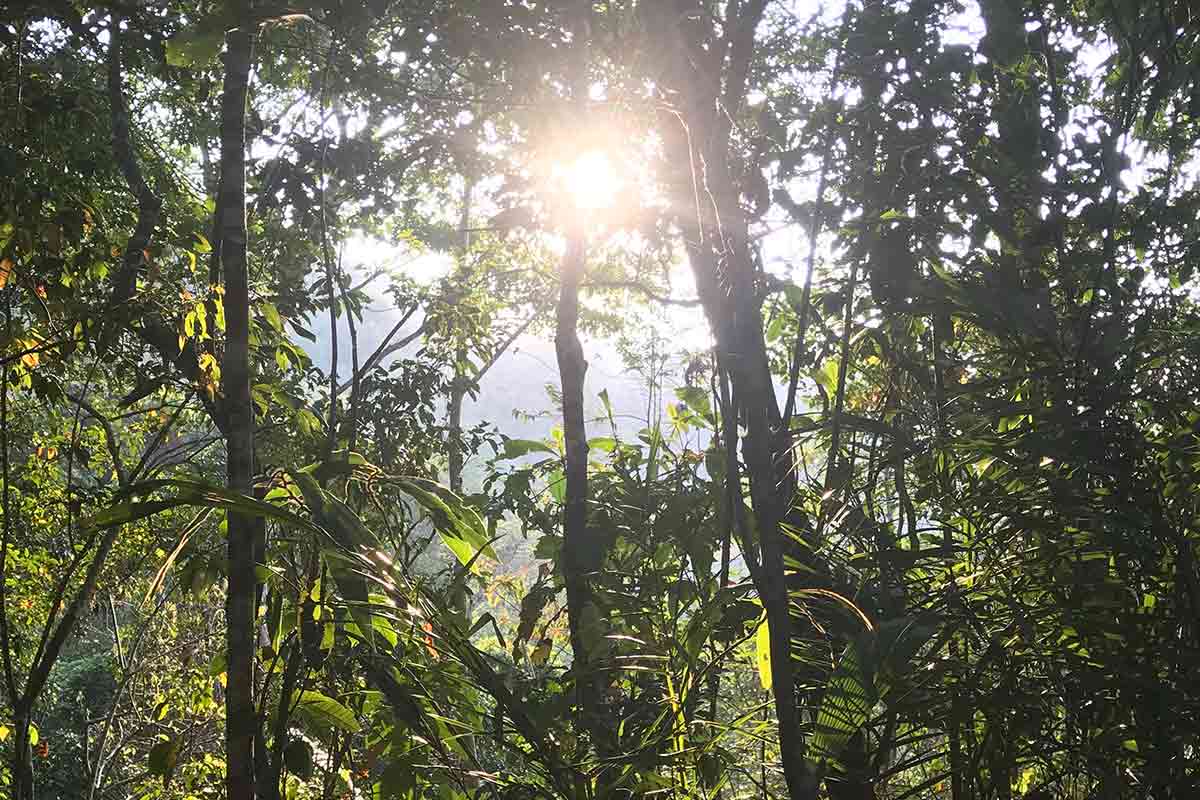
What I loved about this tour was how they integrated local tribes and their own lifestyles into the itinerary. This meant we met an indigenous family living here, learnt how to make chocolate from cacao seeds with them and also tried native food dishes from the region.
Overall it’s much harder to see animals given the thick vegetation, however there’s something special about walking around this remote part of the Amazon Jungle. This was especially true at night, where we stayed in a windowless cabin and could hear all kinds of animals and insects around us. Goes without saying – however make sure you bring good insect repellent for this part of the trip.
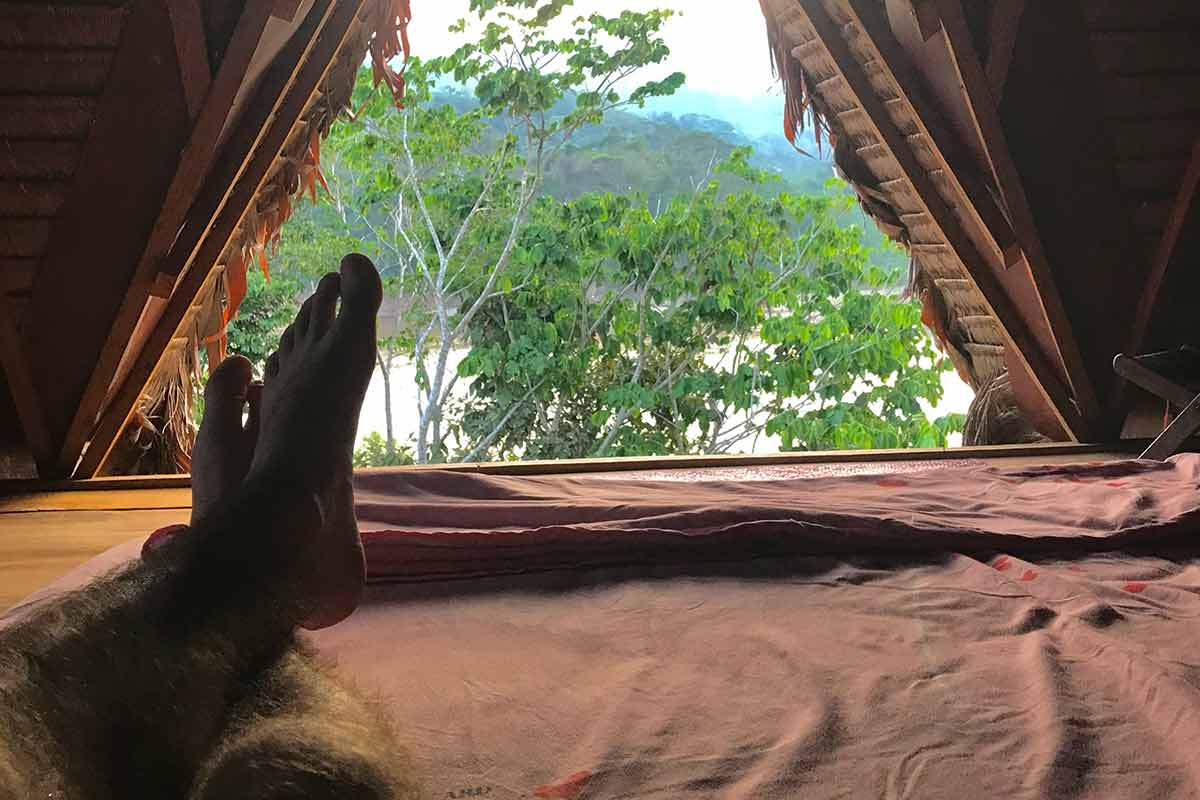
There was meant to be a night tour too however we were too tired to go on it, so we instead took the early morning tour where we saw the sunrise. If you’re lucky you can see wild monkeys and other mammals at this time of day, however we weren’t as fortunate (this did kind of suck and was a low point – however it’s important to remember that it’s harder to spot animals in the thicker jungle).
Spotting Animals in the Pampas Region
After all of the jungle hikes (as well as a pretty filling buffet breakfast at the lodge), we then headed back to Rurrenabaque to join up with a group tour to head to the Pampas.
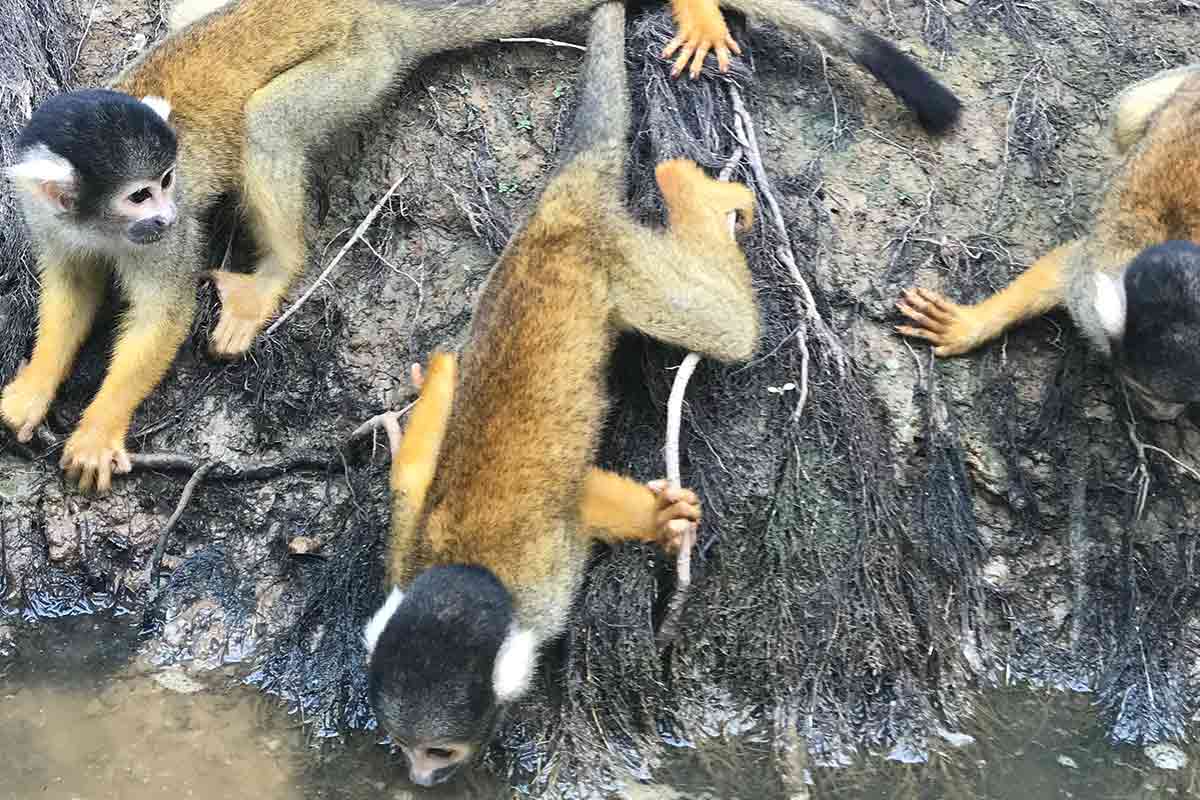
Within just an hour of driving we started to get our fill of seeing larger wildlife, which included Ostriches, Capybara and many exotic birds. After a few more hours we reached the boat, and this is where things got more interesting.
Along the 3/4 hour boat ride we saw dozens and dozens of Capybara, Caiman and also curious Monkeys who came within touching distance of us. We even stopped along the way to watch a few Pink River Dolphins go about their daily business too.
Aside from seeing more animals, the great thing about heading to the Pampas Region is that you’ll have many interesting activities and experiences included too. Piranha Fishing was one of these (however this time I wasn’t so lucky like I was in Brazil and caught nothing), and also some early-morning wildlife spotting walks.
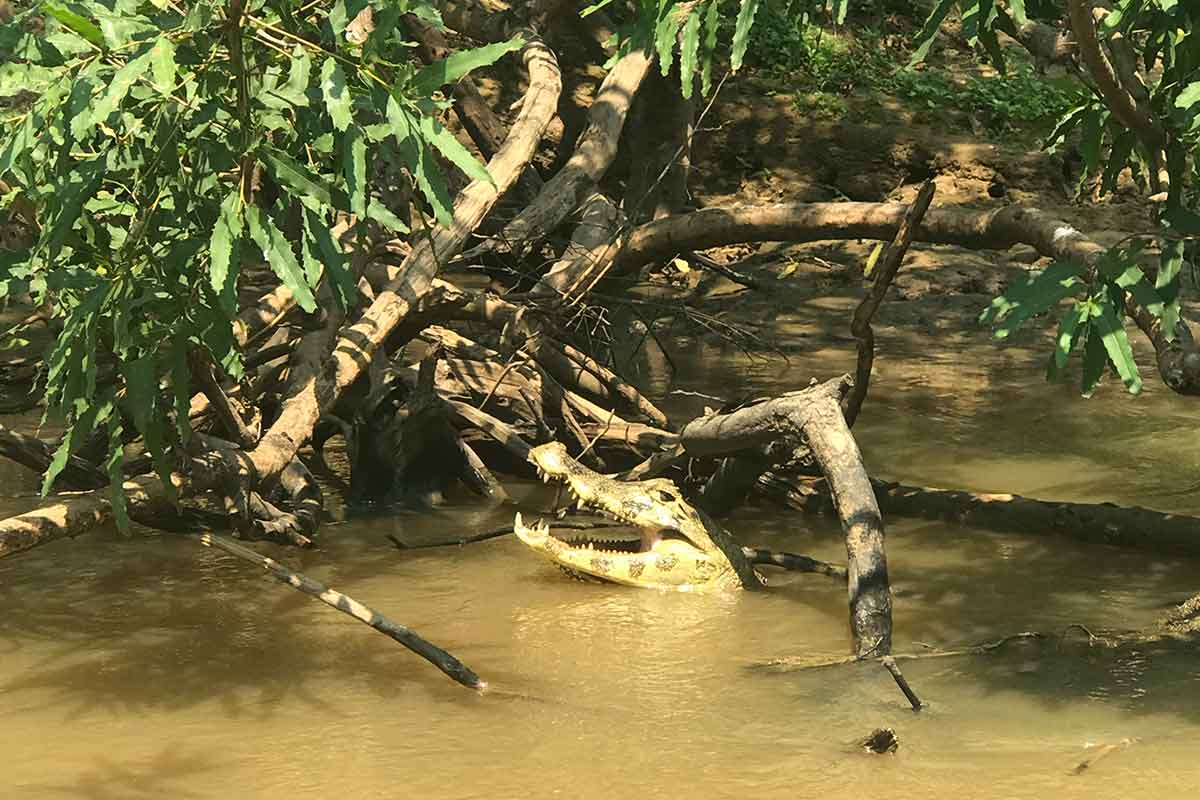
All in all, I was really happy to have picked the combined tour as each region offered something that the other couldn’t guarantee. The Madidi National Park was much more authentic and offered true Amazon sceneries, whilst the Pampas guaranteed seeing various types of jungle animals. Now whilst I still didn’t see a wild Jaguar (and remains one of my last and biggest bucket list items to this day), it was definitely one of my favorite Amazon Jungle experiences out here in South America.
Alternatives to Rurrenabaque (other Jungle Experiences in Bolivia)
As a traveler who loves getting off the beaten path, I try my best to uncover other hidden gems and areas which aren’t quite as well-known.
In Bolivia, Rurrenabaque remains the most popular option, however it’s not the only one (which is ideal if you’re far from La Paz such as in the south of the country).
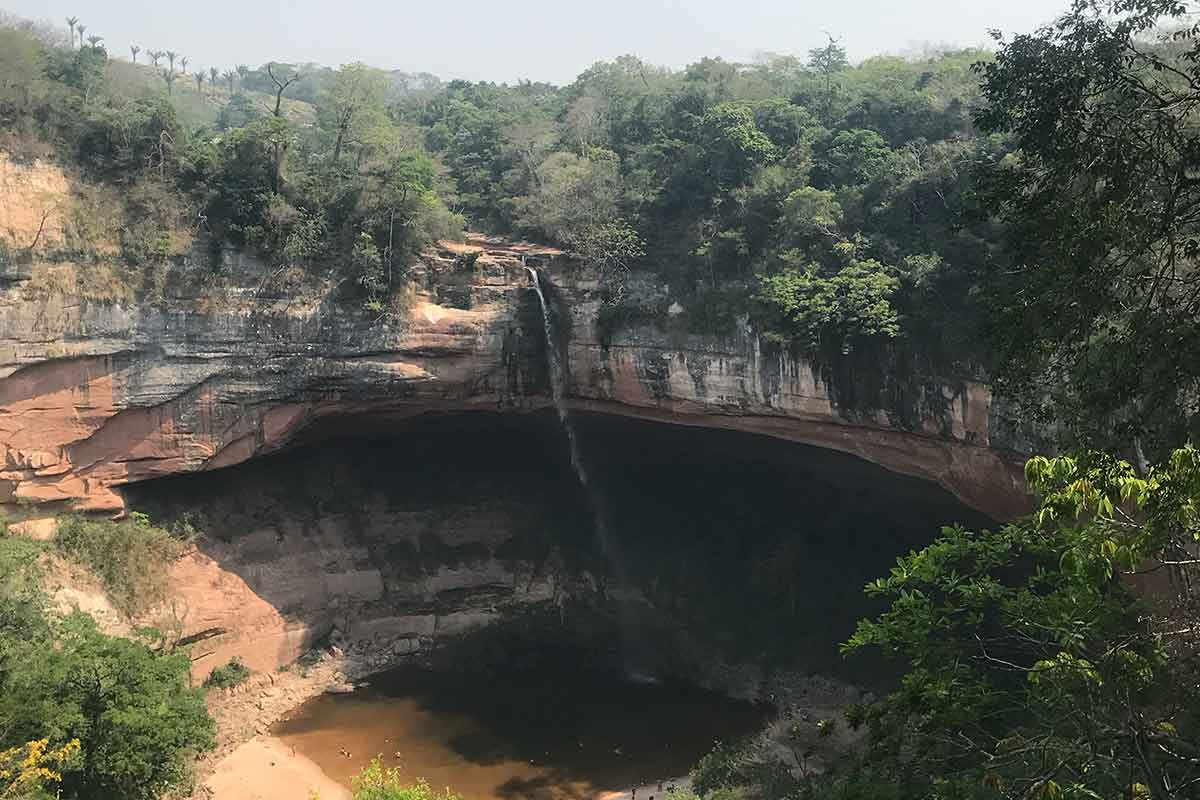
Santa Cruz de la Sierra is another gateway to seeing the jungle in Bolivia, although it’s not technically the Amazon Jungle. Still we can enjoy unique landscapes and even see rare animals too like Jaguars. The Amboró National Park is a really diverse area that is close to the city, where many jungle tours often head for various days. You can also visit the Jardín de las Delicias for a memorable waterfall swim.
Further south we can find the beginnings of the Gran Chaco, which is mostly on the other side of the border in Paraguay. This is a really unique region to visit, where you can visit Palm Savannahs and also see Giant Anteaters (read more about the Gran Chaco here).
My Top Tips for Visiting the Amazon Jungle in Bolivia
Now I’ll go through some of the best ways you can prepare for a trip into Bolivia’s portion of the Amazon Jungle.
How to Choose the Best Jungle Tours
A frequent concern amongst travelers (and also one that I had) was making sure I selected the right tour. It’s important to know that there’s two main areas you can visit here (The Pampas and The Madidi National Park), each with their own style, environment and benefits.
The Pampas is almost like a safari-style environment. You can guarantee you’ll see animals here (especially Monkeys, Caiman and Capybara), although it can feel more touristy. Trees are much smaller here given it’s maintained, so is best only for seeing animals rather than for an authentic jungle experience.
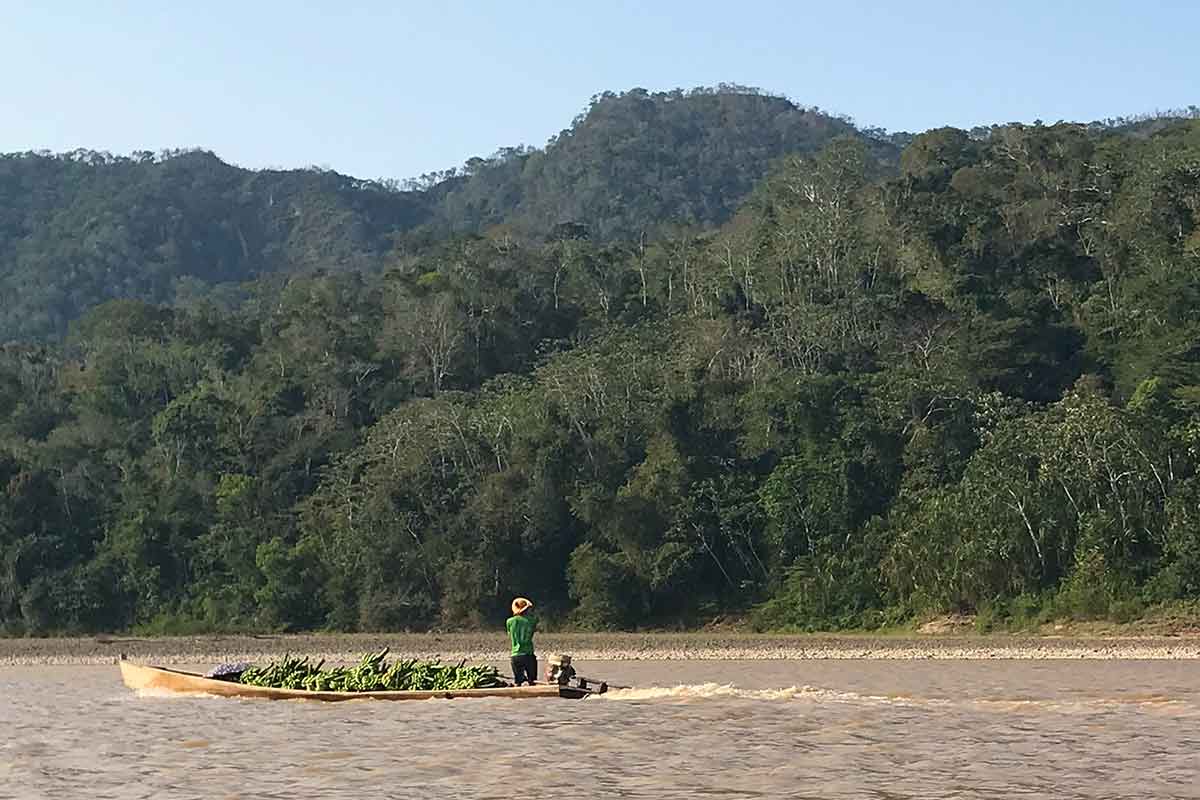
The Madidi National Park is the true, wild Amazon Jungle. Anything goes here – meaning you may see less animals (and it is harder given the jungle and cover is thicker). However you may also see rare species too like Jaguars, Howler Monkeys and different types of Frogs and Tarantulas. You will however get to walk through the beating heart of the Amazon, surrounded by unforgettable scenery.
Both regions are great for different reasons, so it all depends on what you personally want to do. As mentioned I did a 3 day Tour (1 day in Madidi and 2 days in the Pampas), and think it’s the best for an overall experience of the Bolivian Jungle. In Rurrenabaque you can book last minute tours, however be prepared to visit a few different agencies since they can differ on price and activity flexibility.
You can also pre-book this all-inclusive jungle tour, which is best for those who want everything ready before they arrive in Rurrenabaque. Here you’ll spend 4 days exploring both of these unique ecosystems, staying with local communities as you get a much more immersive experience.
When is the Best Time to Explore the Bolivian Jungle?
Usually with the Amazon Jungle we’ll find it’s both hot and wet all year-round. Whilst this area near Rurrenabaque is somewhat similar in terms of heat, the dry season can actually promise much less rainfall which makes it the most ideal time to visit.
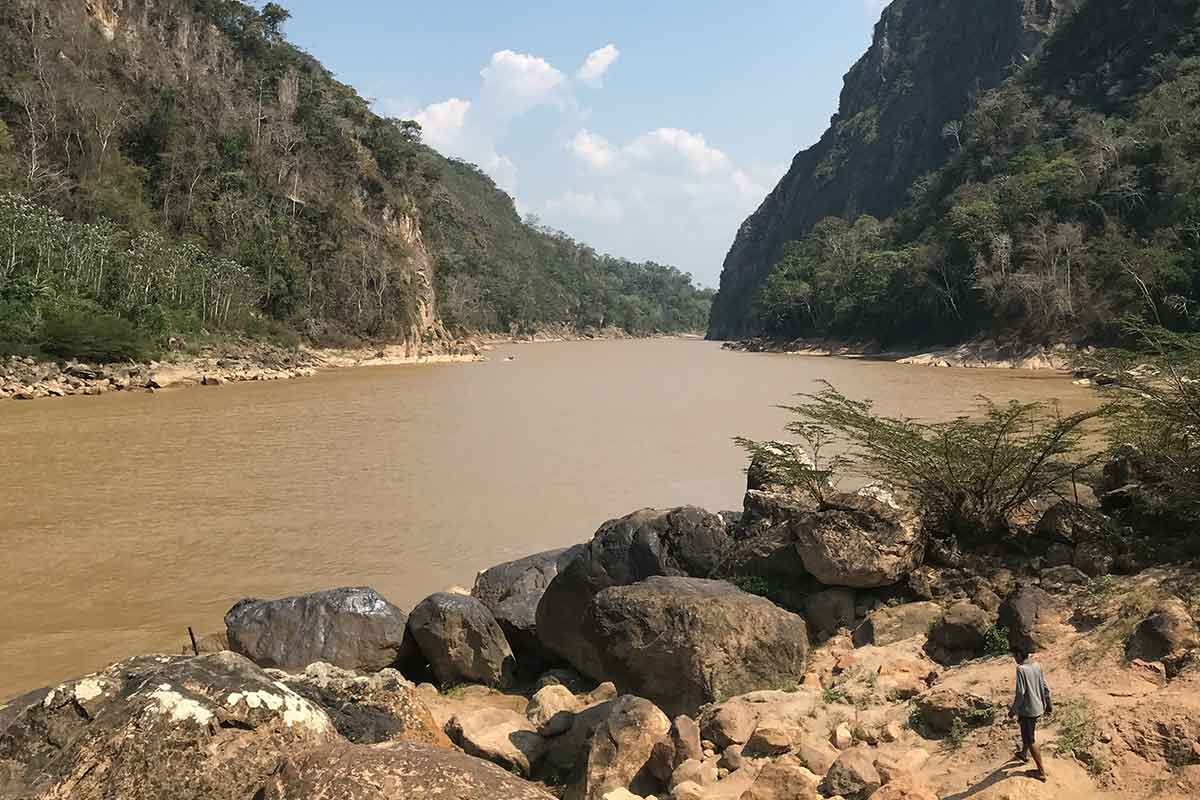
The dry season runs from late June until October, where average temperatures hover between 73-82°F. Highs can reach a pretty toasty 91°F, whilst evening lows can drop down to 66°F. You can expect anywhere from 2-4 inches of rainfall per month, which is actually really good considering it is the Amazon Jungle (in some areas like Iquitos rainfall can reach up to 10+ inches within a single month).
The dry season is considered the best time to spot land-based animals, given river banks enlarge (as there’s less water flowing through) which attracts more mammals. I went in September and ended up seeing plenty of Capybara, Monkeys and even a Coati too. This is the time to come if you want a shot at seeing some Jaguars.
The wet season begins in November and lasts until May. Average temperatures range from 75-80°F, with highs of 89°F and lows of 69°F. Whilst quite similar to the temperatures found in the dry season, the difference in rainfall on the other hand is pretty significant. Anywhere from 4-10 inches can fall throughout each month here. Because of this, this time of year attracts more mosquitoes so make sure you bring a solid, high DEET Mosquito Spray with you.
Given there’s more rain and mosquitoes, you may be wondering what the point is in heading during this period. However there’s various benefits of a visit during the wet season. Firstly the rivers will be fuller, meaning you can head deeper into the jungle by boat, where you can easily spot Pink River Dolphins (as well as see more Caiman and catch Piranhas using local fishing techniques). As well as this the jungle will be even more green than normal, making for some unforgettable photos.
Regardless of when you visit, it’s important to remember that the weather is unpredictable and can change rapidly. Showers are quick and heavy too, so you’ll want to make sure you’ve got a solid Poncho ready!
What to Pack
Whilst on smaller tours or day trips you can half-heartedly arrange your bag in 5 minutes, with the jungle you’ll want to properly plan in advance.
It can be quite an unforgiving environment, so it’s best to make sure you have everything you could possibly need whilst here.
This includes the following:
- A Poncho or Rain Jacket (rain can sometimes be heavy even during the dry season)
- Light and Breathable Clothes
- Long Trousers (to avoid getting bit by snakes or insects)
- Hiking Boots (we recommend these for men and these for women)
- A Hat or Cap
- A DayPack
- A Waterproof Cover for your DayPack
- Lots of Sunscreen (apply it daily)
- Mosquito Repellent (with at least 50% DEET)
- Medications (as well as anything you personally need, we would recommend bringing anti-diarrhoea tablets and ibuprofen)
- First-Aid Kit (this includes necessities like plastic bandages and rubbing alcohol – although of course your tour will most likely have everything you could need)
- A Water Bottle
- A Powerful Torch (for night-time walks)
Do I Need Travel Insurance?
Taking out travel insurance is always a good idea when heading to Latin America. However I’d say that for a trip to the Amazon Jungle it’s even more important, given the amount of potential hazards here.
Of course it’s extremely unlikely that you’ll get into a scrap with the local animals here (and hopefully you don’t considering there are alligators, Jaguars and others to contend with), however even minor things like twisting an ankle or getting food poisoning are of course still possible here.
We recommend taking out a travel insurance policy with World Nomads, who provide cover for you when you head into the Bolivian Jungle. Their policy is valid for over 150 different types of activities, which makes it an overall solid choice for a trip to The Amazon Jungle (considering everything that you can see and do here).
Visiting the Bolivian Amazon Jungle
The Amazon Jungle is one of a kind, and here we can find different experiences depending on the country we visit. Bolivia remains one of the more authentic, and we’ll also find some of the highest levels of biodiversity here when compared with others.
In this guide I’ve covered everything you need to know about visiting the Amazon Jungle in Bolivia. This includes the best time to visit, what animals you can see, the best tours and much, much more.
Are you still planning your route around Bolivia? Then be sure to read our comprehensive Backpacking Bolivia Itinerary for more practical tips and inspiration.
👉🏽 P.S. If you’ve found this guide helpful, buy us a coffee here to say thanks! Or, support us by downloading our South America Travel Bible to get our best content.
“Dear traveler! Some links in this post contain affiliate links. Meaning, if you click through and make a purchase, book a hostel or sign up for a tour, we may earn a small commission at no additional cost to you. Your support means a lot and helps us to carry on traveling and maintaining the quality of this site for you.”

